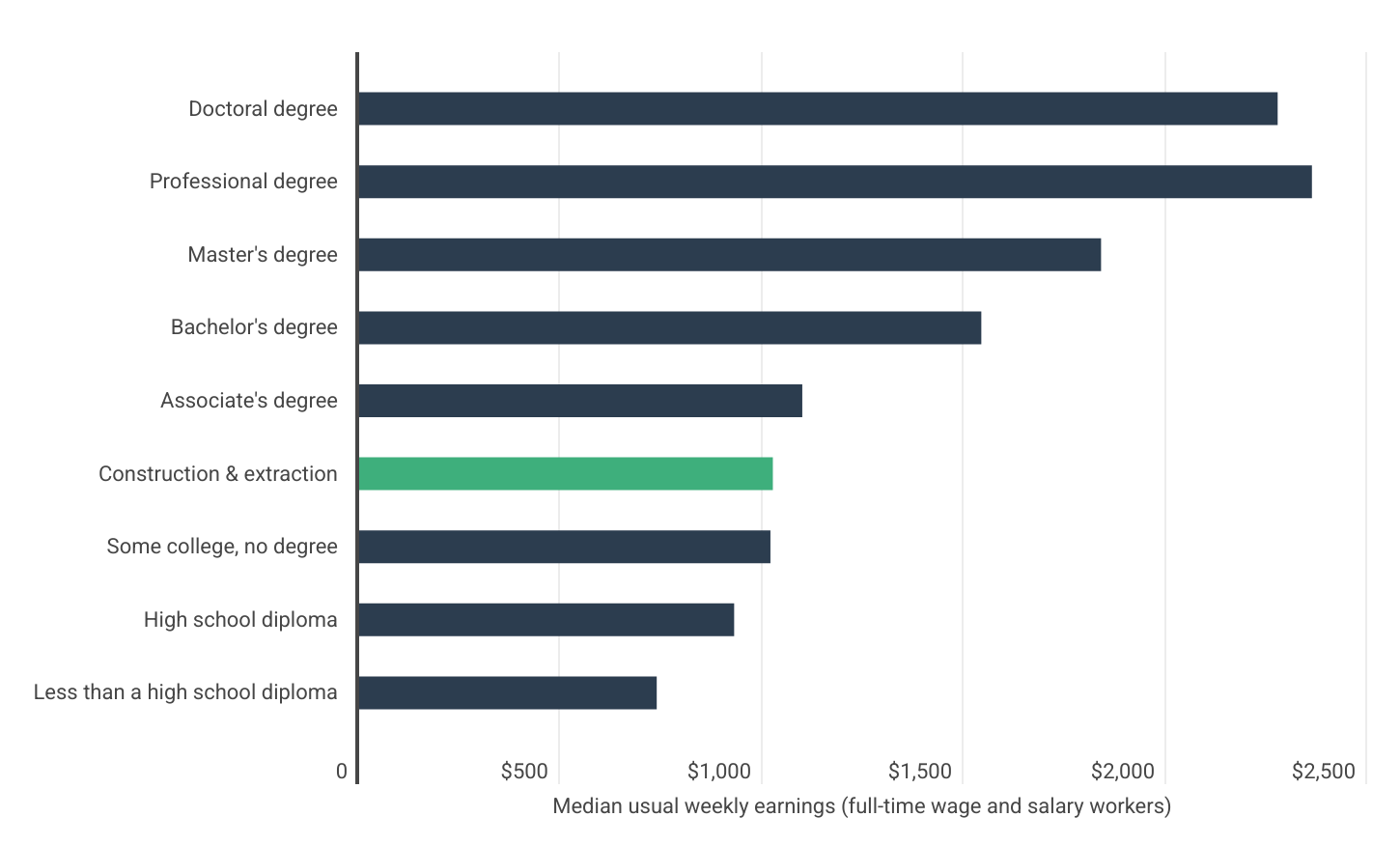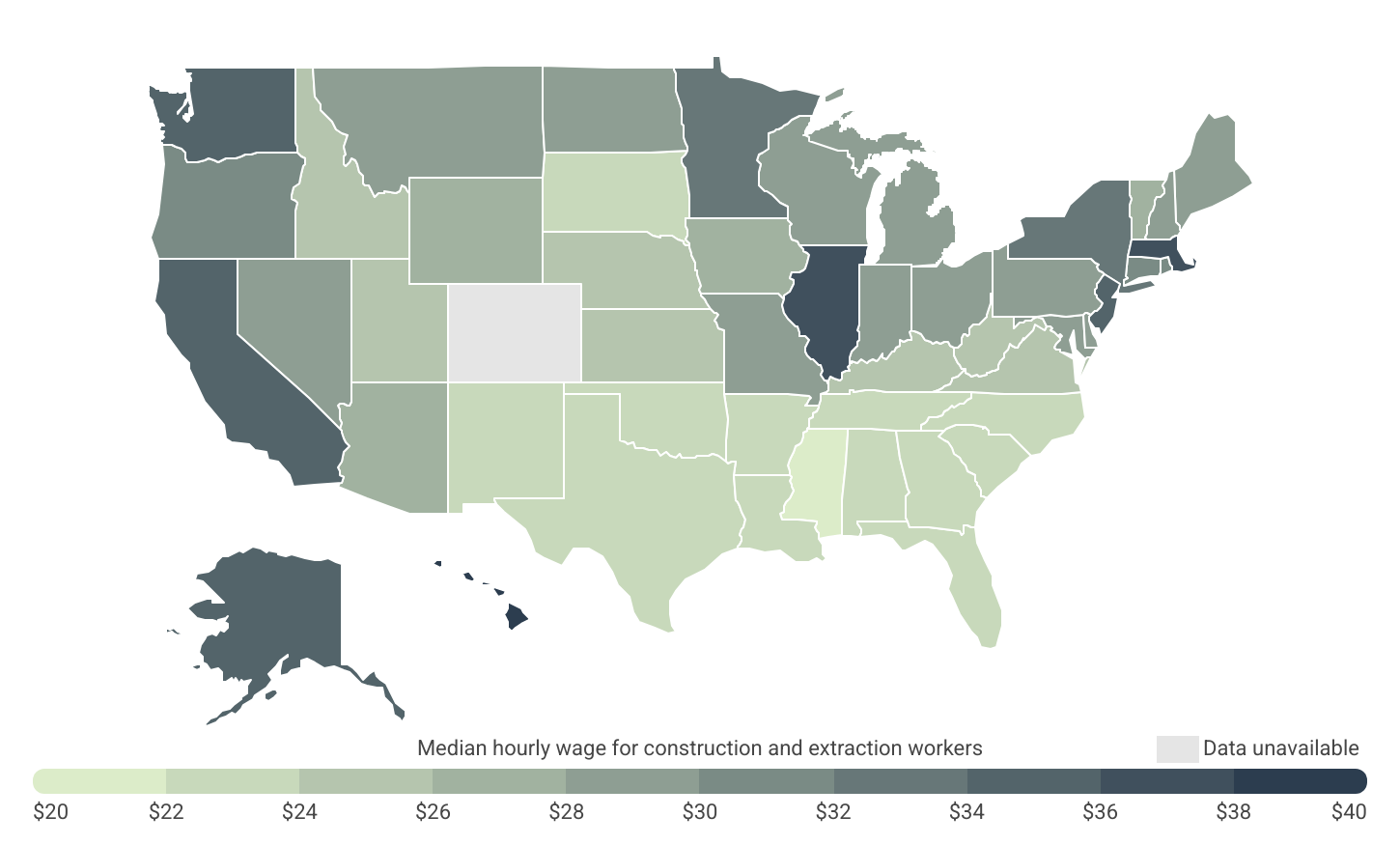In recent years, there has been a marked resurgence of interest in skilled trades among young Americans, particularly in fields like welding, plumbing, and electrical work. This shift is driven by a confluence of economic and cultural factors. Rising college tuition costs and the burden of student loan debt have prompted many young adults to reconsider traditional four-year degrees in favor of faster, more affordable vocational training. Alongside this, a growing awareness of the strong earning potential and job security in skilled trades has enhanced the appeal of construction and related careers. For some, the accelerating rise of artificial intelligence—and its potential to automate a wide range of traditional white-collar jobs—has further underscored the value of hands-on work.
This growing interest in the trades aligns with broader labor market trends. According to projections from the U.S. Bureau of Labor Statistics (BLS), employment in the construction sector is expected to grow by 5.6% between 2023 and 2033—outpacing the 4.0% average growth rate for all occupations during the same period. Demand is being driven by a combination of infrastructure and manufacturing investment, population growth, and a need to replace retiring workers.
Against this backdrop, researchers at Construction Coverage—an independent website that offers tools, guides, and research for construction firms—analyzed the latest BLS data. The analysis uncovers how construction worker wages compare to those of other jobs, which states offer the highest average pay for construction workers, and which specific construction occupations command the highest wages. The analysis also looks at total employment figures and projected growth rates for each occupation, providing a snapshot of where economic opportunities in construction are strongest.
Here are the key findings from the report:
- Strong National Pay: Construction and extraction workers earn a median hourly wage of $28.06, translating to an annual median of $58,360—well above the earnings for many jobs requiring similar or less formal education.
- Solid Job Outlook: The construction sector is projected to grow 5.6% over the next decade, outpacing the average growth rate of 4.0% across all occupations.
- High Rates of Self-Employment: About 13.9% of construction workers are self-employed—more than double the rate for the overall U.S. workforce (5.8%)—highlighting the sector’s strong entrepreneurial opportunities.
- Best-Paying States: States like Hawaii, Illinois, Massachusetts, Washington, Alaska, and New Jersey report the highest median hourly wages for construction workers—ranging from $35 to over $38.
- Top-Earning Roles: The highest-paying construction job is Elevator and Escalator Installer and Repairer, with a median annual wage of $106,580. Other top roles include construction supervisors, boilermakers, and building inspectors.
- Fastest-Growing High-Paying Job: Electricians—one of the most common high-paying roles—earn a national median wage of $62,350, and are projected to see 10.8% job growth over the next decade.
Construction Wages Compared
Construction workers are well paid compared to other workers with similar levels of education

Source: Construction Coverage analysis of U.S. Bureau of Labor Statistics data | Image Credit: Construction Coverage
Construction occupations tend to offer strong wages relative to their educational entry requirements. Most roles in the field do not require a college degree—and in many cases, not even a high school diploma—yet they pay a median weekly income of $1,026 for full-time wage and salary workers. This figure is just below the $1,099 median for those with an associate’s degree and exceeds the typical earnings of individuals with some college but no degree ($1,020).
Median construction wages also significantly outpace the median wages of high school graduates ($930) and those without a high school diploma ($738), highlighting the economic value of skilled labor, even in the absence of formal postsecondary education.
Construction Wages by State
Hawaii, Illinois, and Massachusetts report the highest median hourly wages for construction workers

Source: Construction Coverage analysis of U.S. Bureau of Labor Statistics data | Image Credit: Construction Coverage
Construction workers generally receive competitive compensation, though their earnings can significantly vary based on their location. Wages are especially strong on the West Coast, in Alaska and Hawaii, and across parts of the Midwest and Northeast, where hourly wages for construction workers exceed the national average. For instance, Hawaii and Illinois boast median hourly wages exceeding $37, while Massachusetts, Washington, Alaska, and New Jersey all top $35. Conversely, several Southern states pay less than $24 per hour for construction labor.
Moreover, the nature of the role significantly influences the level of compensation. Specialized positions such as elevator installers, boilermakers, and pile driver operators tend to command higher rates. However, even general construction supervisors, building inspectors, and more common tradespeople like electricians also rank among the highest-paying jobs in the construction industry.
Here is the data breakout for the best-paying construction occupations in Alabama:
- Best-paying occupation: Elevator and Escalator Installers and Repairers
- State median hourly wage: $43.15
- State median annual wage: $89,750
- 2nd best-paying occupation: First-Line Supervisors of Construction Trades and Extraction Workers
- State median hourly wage: $30.78
- State median annual wage: $64,030
- 3rd best-paying occupation: Boilermakers
- State median hourly wage: $30.39
- State median annual wage: $63,220
For a complete list of Alabama construction occupations, a detailed methodology, and complete results for the rest of the U.S., see Best-Paying Construction Jobs in the U.S. on Construction Coverage.



